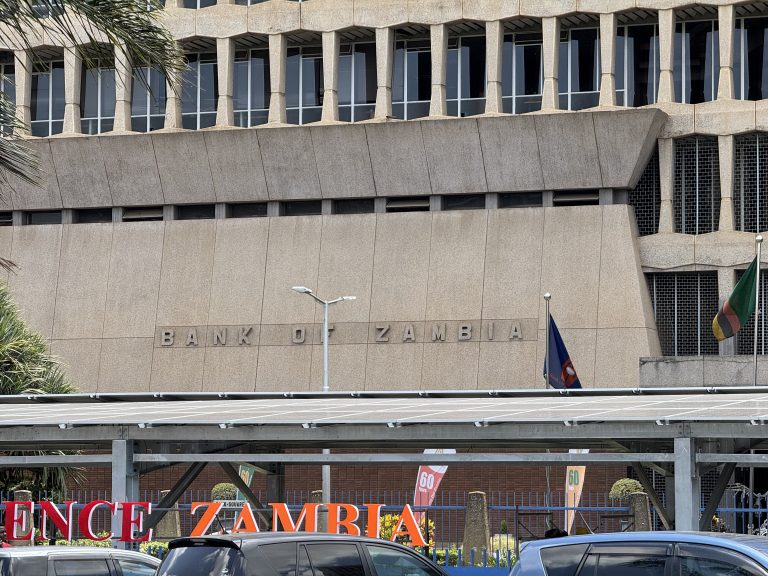The Central Bank in Africa’s second-largest copper producer, will hold its final rate-setting meeting for the year this week, with Governor Dr. Denny Kalyalya scheduled to announce the decision on Wednesday, November 13, following Monetary Policy Committee (MPC) deliberations starting Monday, November 11.
This meeting takes place amid severe drought conditions that have intensified power shortages, leaving Zambia with a gross electricity deficit exceeding 1,470 MW. Despite the power utility securing 670 MW through interventions, the net shortfall remains above 800 MW. This has resulted in some regions facing outages exceeding 21 hours, prompting the Energy Regulation Board to approve a tariff increase to help cover import costs. Agriculture, crucial to Zambia’s economy, continues to struggle under poor rainfall, with output for the upcoming season projected to decline by 56%. The government has declared drought a national disaster and introduced private sector-supported irrigation to stabilise winter maize production. Zambia implemented energy reforms to include net metering, open access and expedited licensing this year. Tariffs will graduate to cost reflective fully by 2027.
Read More: Why Zambia’s Central Bank Should Ease Cash Reserve Requirement Amid Deepening Drought
Inflation stood at 15.7% in October, remaining in double digits due to domestic supply pressures and global factors, including crude oil price volatility and currency depreciation. Food costs reflect drought impacts, while cost-push inflation remains high due to petroleum price surges and a weakened kwacha. The manufacturing sector’s Purchasing Managers Index, an indicator of industrial health, has contracted for ten consecutive months, reflecting inflation-driven cost pressures, liquidity constraints, and the ongoing power crisis.
Following a recent mission, the International Monetary Fund (IMF) cut Zambia’s 2024 growth outlook to 1.2%, down from 2.3%, citing challenges such as drought, currency depreciation, and inflation. In contrast, the Zambian Ministry of Finance projects a 6.6% growth rate for 2025, driven by easing drought impacts, a mining boom, and increased private sector investment.
In October, government bond sales saw a pronounced yield curve flattening, with yields down an average of 129 basis points. The 15-year bond now yields 23.5%, down from highs of 27.75%, with the 10-year at 22.5% and the 5-year at 21.5%. Shorter-term securities followed suit, with yields on 91-day and 182-day treasuries down to 10% and the 1-year bond dropping to 16% from 19%. While lower yields may attract domestic borrowing, this sharp yield decline raises questions about Zambia’s appeal to foreign investors, especially as global central banks, including the U.S. Federal Reserve and China’s PBoC, shift toward rate cuts, making it essential for Zambia to maintain attractive returns.
Currency pressures persist due to supply-demand imbalances. Mining production remains low but is expected to recover in the latter half of 2025. Demand remains high for essential imports, including fuel, agricultural inputs, and consumer goods, underscoring the need for greater local manufacturing capacity. Zambia has significant infrastructure projects underway, including the $400 million, 300 MW Maamba power plant expected to come online within two years. The Mines Ministry’s strategic roadmap aims to raise annual copper output to 3 million metric tons by 2031, an ambitious goal requiring substantial energy investments.
Positive precipitation forecasts from the SADC could benefit agricultural output in 2025, although lingering fading odds of La Niña continue to weigh. Further, BOZ’s impending de-dollarization policy statement could impact the currency’s trajectory, which remains weak to year-end.
BOZ has already raised rates by 250 basis points to 13.5% this year and lifted the cash reserve ratio to 26% to stabilize the kwacha. Additionally, it extended a K5 billion stimulus package for SME’s to mitigate drought-related credit risks. With inflation beyond the target range of 6-8% and economic growth constrained by drought, the MPC may lean toward holding rates steady this week to balance economic stability and inflation control amidst global monetary easing trends.
The Kwacha Arbitrageur

